until Abu Dhabi Autonomous Racing League

The Abu Dhabi Autonomous Racing League (A2RL) has had a meteoric rise given the journey from conception to the track has taken about a year.
Yas Marina Circuit held the first A2RL race on April 27, 2024. It soon became clear that this league’s aims go beyond just racing – numerous figures at the helm describe it as a “challenge” rather than a race series – as A2RL aims to shape STEM education in the United Arab Emirates, and autonomous mobility across the world.
With a field of rapid Dallara-built single-seater cars, this autonomous race, which offers a hefty prize pool, impressed on its inaugural weekend as an ex-Formula 1 driver shared the track with autonomous racing cars and an array of class-leading technology.
Here’s what we learned from the first-ever A2RL event.
The A2RL car
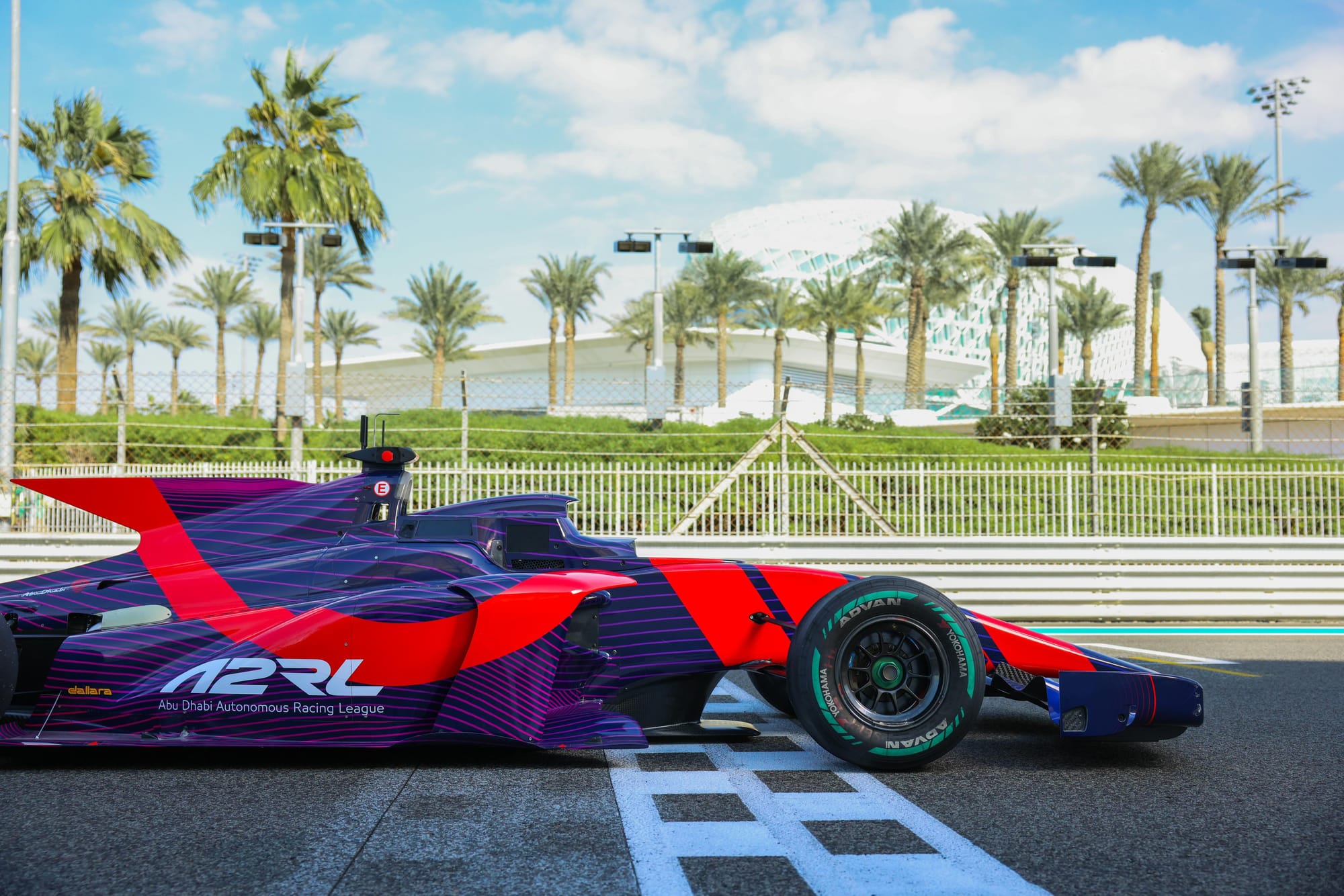
The A2RL car is a 2023 Dallara Super Formula chassis, powered by a four-cylinder turbocharged 2.0-litre engine that can produce around 550 horsepower. This engine is twinned with a six-speed 3MO gearbox.
The car sits on pushrod suspension at the front and rear, with torsion springs and adjustable dampers. Stopping power comes from Brembo carbon brakes, while Yokohama supplies the tyres.
However, it’s the ‘cockpit’ of the A2RL car that sets it apart from other series.
Seven Sony IMX728 cameras provide 360-degree coverage for the AI that drives the car. The AI has more sensors in the form of radars – four ZF ProWave devices – and three Seyond Falcon Kinetic FK1 Lidar devices. Computing power meanwhile comes from the Neousys RGS-8805GC.
This computer supports a high-level Nvidia GPU, Intel ethernet connections for internet, and storage drives – plus ignition power control, GPS, and telemetry software. Encasing the sensors and computer is carbon fibre – but some of it has a browner tinge to it. This is a more sustainable material, which combines carbon and flax.
Each team has the same car; it’s the coding that sets these teams apart.
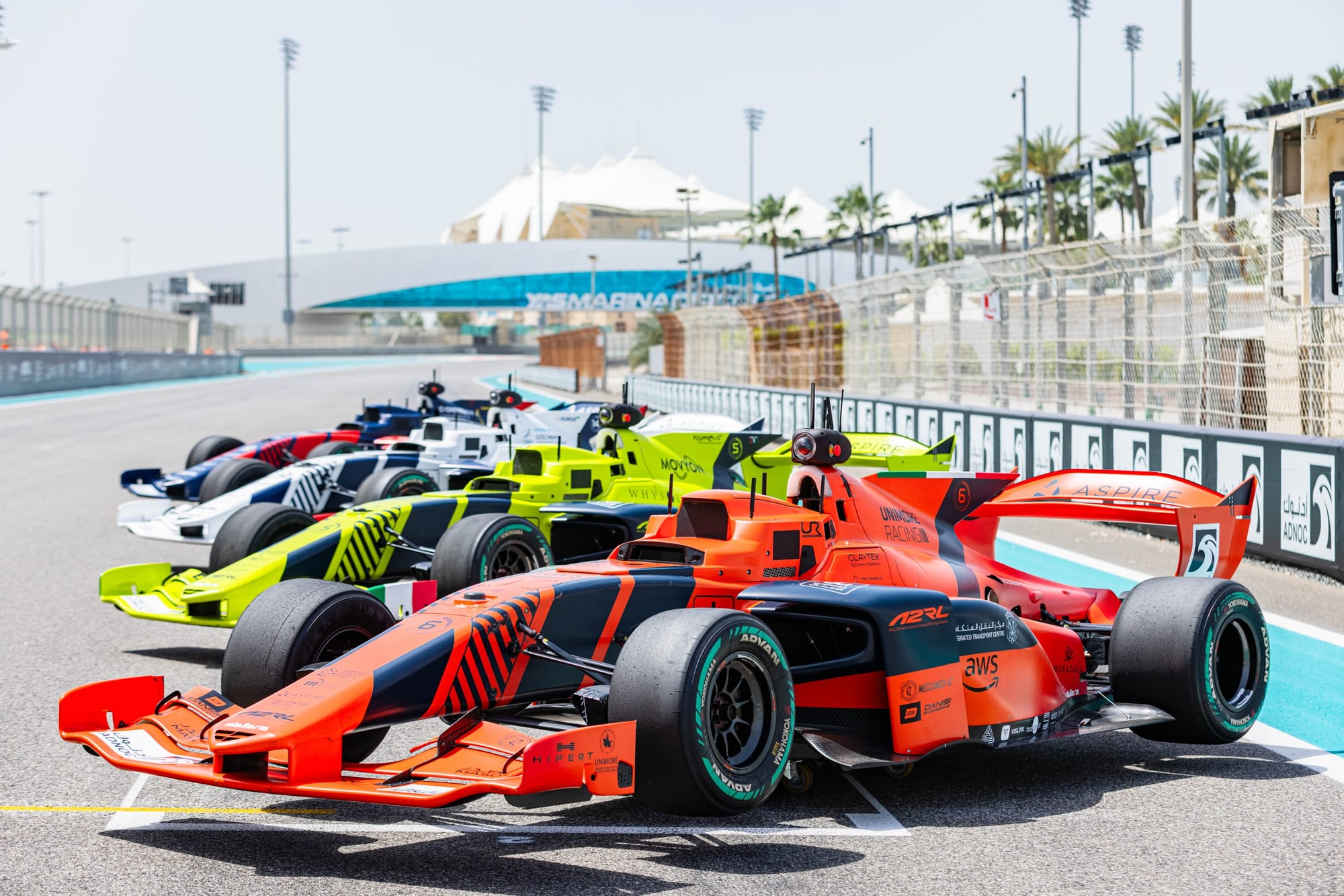
Teams must utilise their coding skills (in a few languages including C++), generating algorithms and encouraging the machine learning software to get the cars around the track as quickly as possible based on data from the aforementioned sensors.
The AI itself must also understand how hot the tyres and brakes are, just like a human driver does, to get the most out of the hardware. Every five milliseconds, it makes decisions on steering, accelerating, gear shifting, and braking through seven hydraulic actuators. Four of the actuators are connected to the brakes – meaning the AI can control each brake calliper independently.
“All race cars in A2RL use a drive-by-wire system that replicates human inputs. This system employs actuators for the steering, braking, and gear shifting, eliminating the need for a physical driver. These actuators are all controlled by the onboard computer," says Dr Tom McCarthy, Executive Director of ASPIRE, which oversees A2RL.
For safety, there is a ‘red button’ that shuts off the car remotely.
A2RL’s objectives
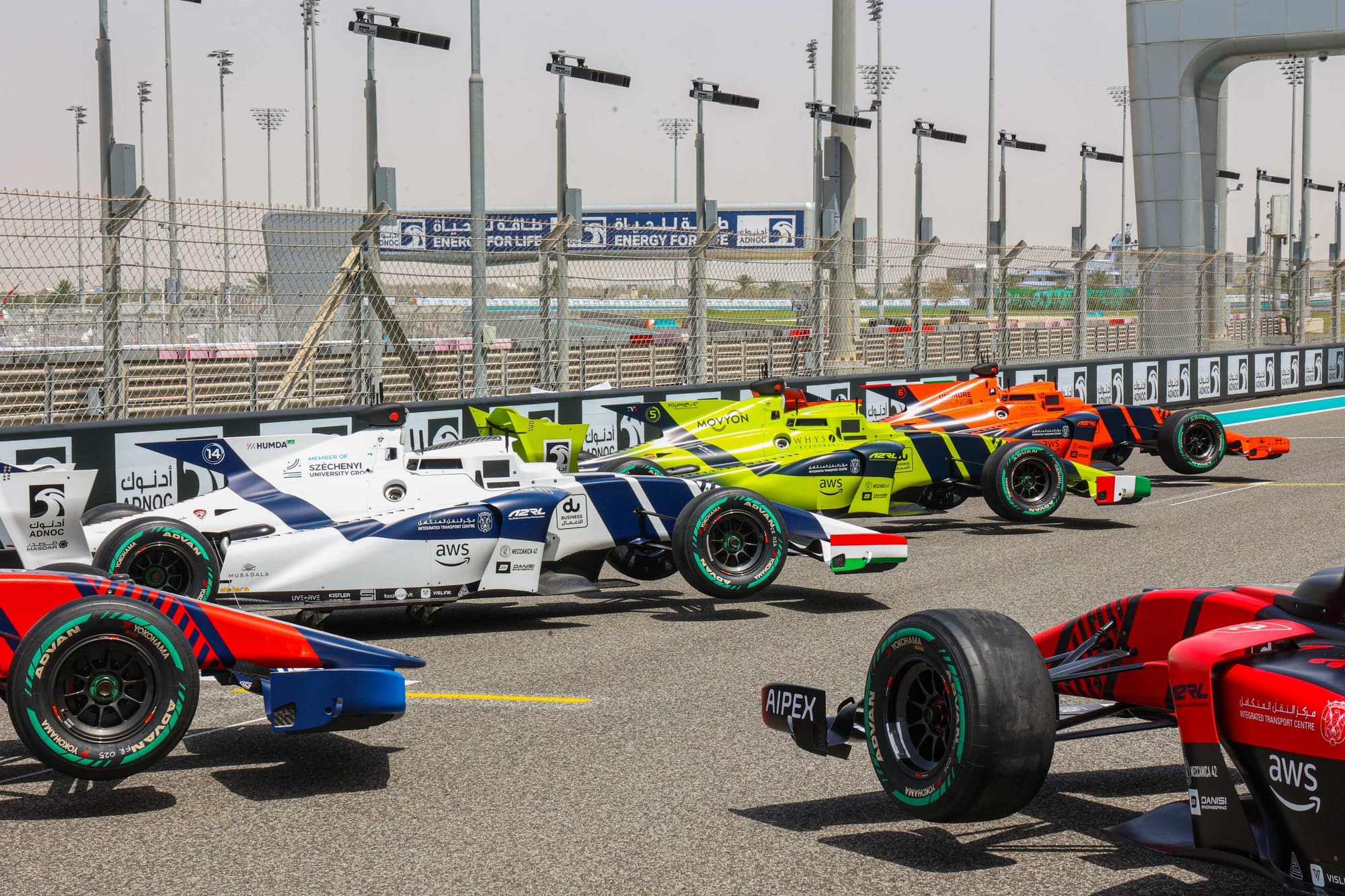
There are eight teams in the A2RL: Fly Eagle (China and UAE), Humda Lab (Hungary), Code19 (USA), Constructor (Germany), Kinetiz (Singapore and UAE), Polimove (Italy), Unimore (Italy), and Technical University of Munich (Germany).
In the inaugural event, each time was vying for the prize pool of $2.25million, the bulk of which went to the winner of the final race.
A2RL’s objectives go further than outright speed, however.
Firstly, the league wants to inspire students and promote STEM (Science, Technology, Engineering, and Mathematics) subjects in the UAE and beyond. Many of the teams entering the competition include university students – but A2RL is engaging younger students as well with a 1:8 scale STEM Competition to mirror the cars on track.
Stephane Timpano, CEO of A2RL’s managing company Aspire, explained: “What we want to do in the UAE is teach students what it means to code and what robotics can do.”
Those who couldn’t attend the event in person could watch the action for free on YouTube, or even don a Virtual Reality headset and enter an immersive experience that put them into the ‘seat’ of a chosen car.
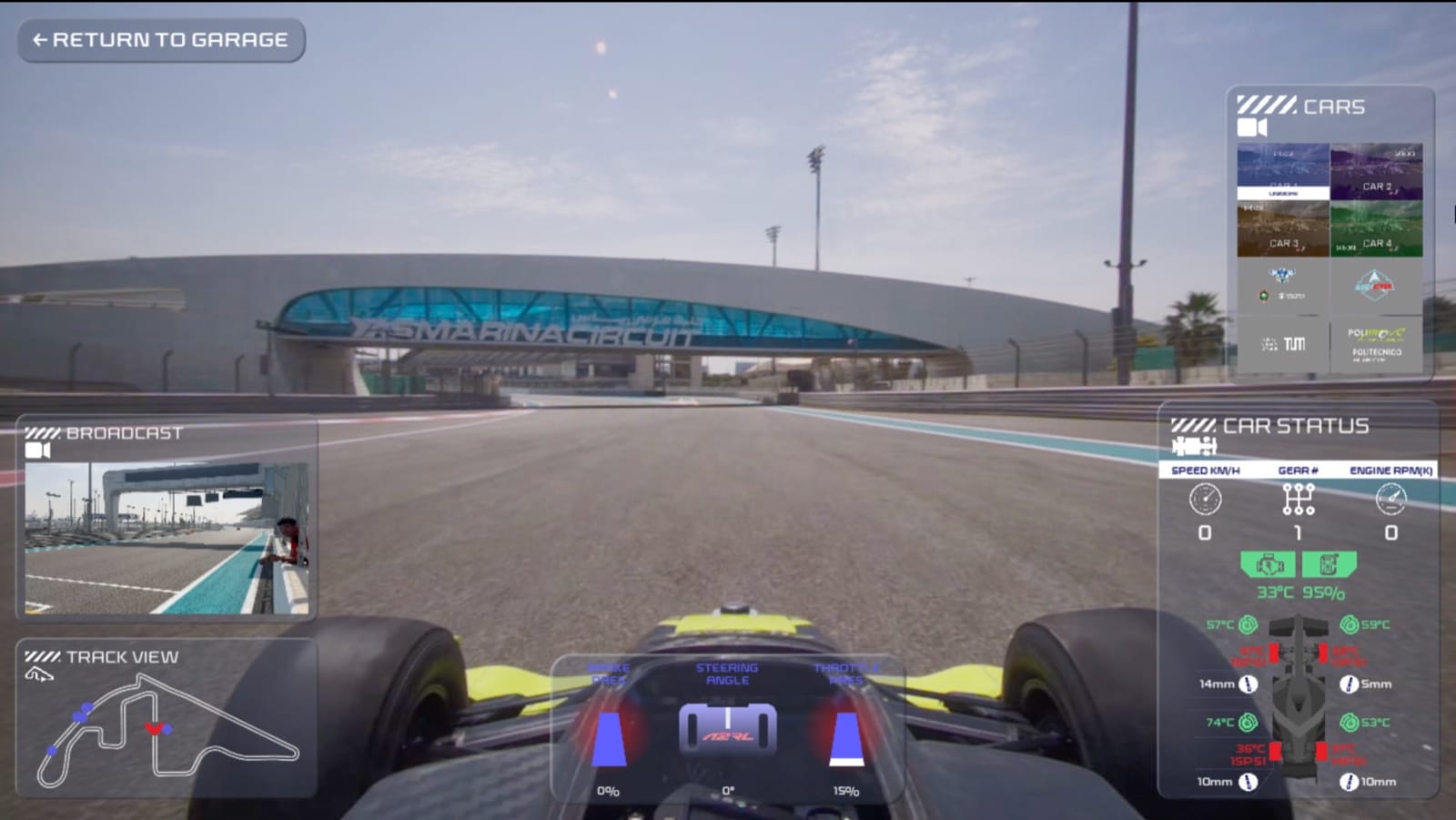
A2RL is also working to shape mobility, which will fundamentally affect all of us. While some manufacturers are testing their self-driving technology on the road, A2RL is testing autonomous vehicles at high speed in a controlled environment.
"[A2RL] will accelerate the development and effectiveness of autonomous systems for deployment in road cars,” explained McCarthy. “Many drivers are showing a lack of enthusiasm towards ADAS 3 components such as Lane Assist, which they find disconcerting. The competitive environment of motorsport can demonstrate the reliability and safety of these systems, thus enhancing consumer confidence and de-risking OEM investment."
How the inaugural A2RL weekend unfolded
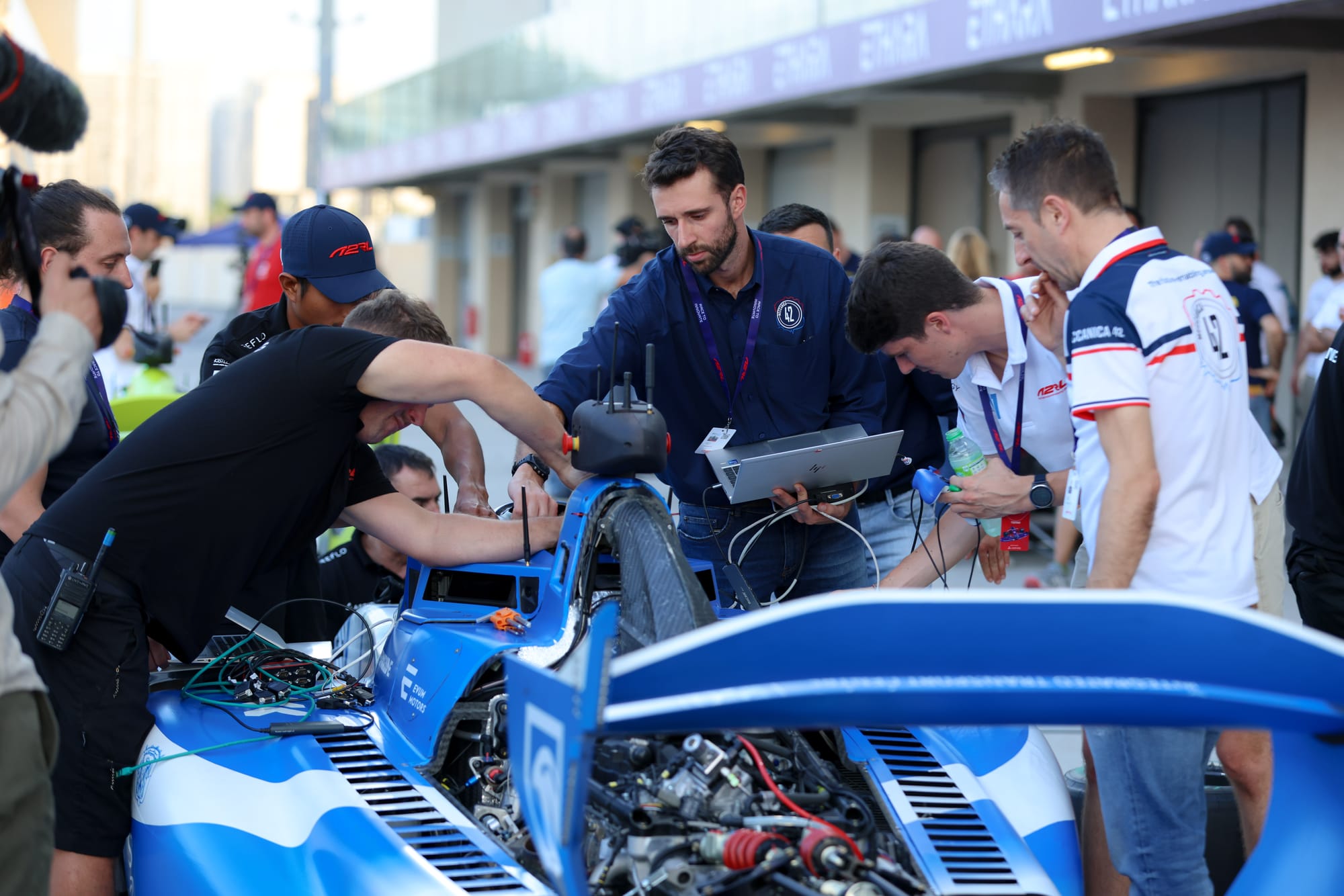
Teams landed in Abu Dhabi to practise on track two weeks ahead of the final A2RL race on Saturday, 27 April. The cars were somewhat human in their approach to the track – choosing different racing lines and braking points depending on the work of the coders. In some ways, the car reflects the people who code its AI behind the scenes.
There were a couple of incidents: on one occasion a car turned straight into the barriers at the inside of a corner; on another occasion one car rear-ended another.
With practice out of the way, the eight teams qualified for Saturday’s four-car final. Those four teams were: Polimove in P1 with a fastest time of 2m00.653s, Unimore in P2, Technical University of Munich (TUM) in P3, and Constructor University in P4.
Before the final on Saturday evening, former Formula 1 driver Daniil Kvyat jumped into a Super Formula car to take on the ‘AI vs Human’ challenge against an autonomous car fielded by technical partner,Technology Innovation Institute (TII).
“I’m not racing autonomous cars here. It won’t be a flat-out race,” cautioned Kvyat before the demonstration.
Indeed, it wasn’t a race – Kvyat easily passed the opposition down the straights of Yas Marina Circuit. But the speed of the cars didn’t matter; A2RL had just put on an engaging live experiment for attendees at the circuit and live viewers around the world.
“We are seeing some history today, which is great to be part of,” said Kvyat after the demonstration. “It was hard to imagine not long ago that this could happen – artificial intelligence cars – and now they are doing a very good job. This is very good development for the future and very interesting for all the engineers, the technology people involved in it.”
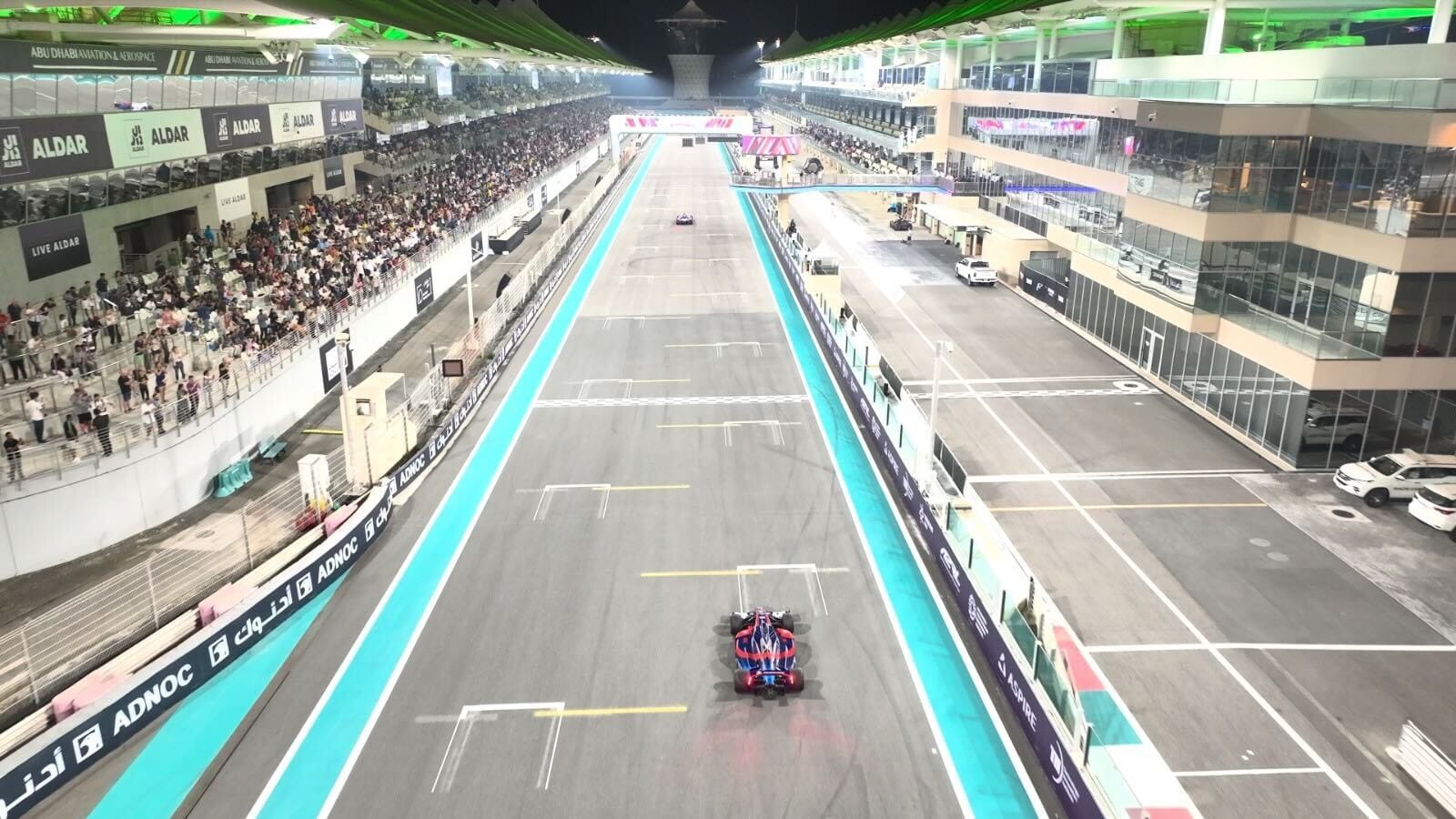
Dr Giovanni Pau, Technical Director at the Autonomous Robotics Research Center in Abu Dhabi, said of the gap between AI and human: “Look at it in a year, or a year and a half from now. I’m not sure it will be the same.”
With qualifying and the AI vs human demonstration complete, the eight-lap final remained. The four teams would have to complete two formation laps and then race in ‘green flag’ conditions for the next six laps.
However, the field of four remained under safety car conditions for three laps, during which TUM’s car slowed to a stop and then restarted. On lap four, the polesitting Polimove car locked up its rear tyres and spun around so was passed for the lead by the Unimore car. Constructor University’s car then stopped briefly before resuming.
With the Polimove car stranded on track, triggering yellow flags and limiting the field to 40km/h, the rest of the field made their way back to the pits on lap five of eight. The Polimove car was recovered and restarted, and the field would have one more lap in which to race.
The race resumed on lap six and Unimore led – but briefly. Its car stopped on track and TUM – whose car had previously stopped on track – swept by for the first-ever A2RL race win. Perhaps eerily, the winner’s race number was 33.
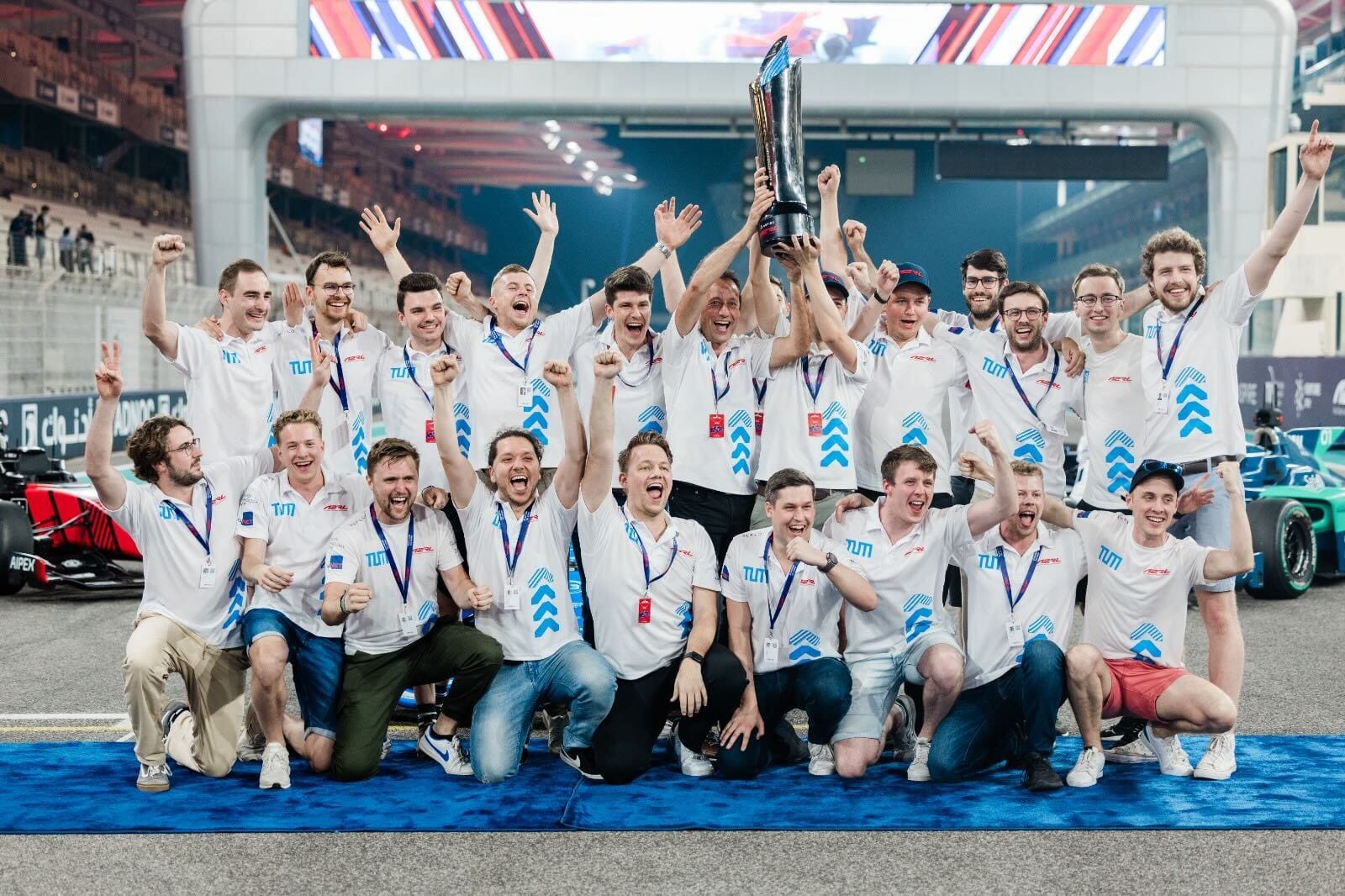
A2RL’s first race was punctuated by reliability and technical issues, but it was hard to shake the feeling that A2RL had made a significant first step towards advancing urban mobility and supporting STEM careers by pitting four AI cars against each other on a racing circuit for the first time.
Things will move quickly. A2RL has committed to at least one race per year, and a sizeable prize pot, for four years. The next time we see these cars on track, they might not behave the same way – and they could be much faster.
We’ll have to wait to see just how far A2RL’s cars will evolve.
